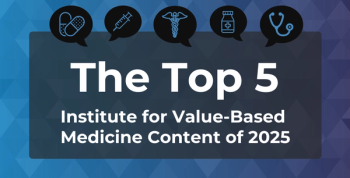
Improving Value in Cardiovascular Care Starts With More Accurate Testing: Merrill Stewart, MD

Avoiding downstream testing ultimately makes it cheaper for whoever is footing the bill, says Merrill H. Stewart, MD, Ochsner Health.
Health systems and payers can reduce costs by investing in more accurate diagnostic testing to avoid unnecessary invasive procedures in
This transcript has been lightly edited; captions were auto-generated.
Transcript
How can health care systems and insurers collaborate to improve cardiovascular care and reduce unnecessary medical procedures?
I think that one of the greatest opportunities for us in terms of a larger health care system—either the system itself, whether their patients are self-insured or whether it's the insurers—is understanding the value in accurate stress testing, avoiding unnecessary downstream testing. So, a system or an insurer or payer has to foot the bill for a more expensive test. But what you do is you eliminate unnecessary invasive procedures, one going through the invasive procedure itself—going through an angiogram—and you eliminate unnecessary revascularizations. Because what happens is, when people go for an angiogram, a doctor will visually grade blockages and then assess whether it's a 70% blockage, or an 80% blockage, or a 90% blockage, or a 50% blockage. And the kind of dirty truth is that the visual assessment that is, “I think it's 70% and you think it's 60%,” the visual assessment is usually and can be off by 30% to 40%. So, I say it's 70% and you say it's 40%, and that's considered standard of care.
If you're not good about getting an accurate out-of-the-box type test and someone goes for an angiogram, a doctor can put a stent in something, call it a day, [and] say it's justified based on [their] visual assessment, when we don't know for a fact whether that was truly a hemodynamically significant obstructive lesion. And there's some additional things that they can do to assess whether it's hemodynamically significant or obstructive, but there's no incentive to do it from a health care system standpoint.
Understanding the value in good quality testing from the get-go, I think from a health care system standpoint, partnering with cardiologists and helping say, “How can I treat the most people and get the best test and avoid the most unnecessary downstream testing?” is important. And it takes someone understanding that you've got to invest in one thing to avoid losing money in another. I think that's something that a health care system or payer could partner with a cardiologist in obtaining, and ultimately it's going to be cheaper for whoever's footing the bill. It just requires thoughtful utilization of testing and procedures.
Newsletter
Stay ahead of policy, cost, and value—subscribe to AJMC for expert insights at the intersection of clinical care and health economics.







































